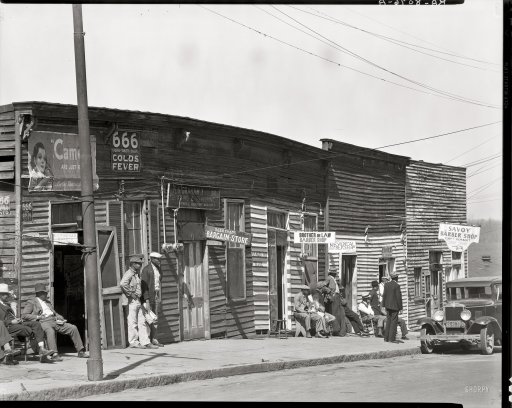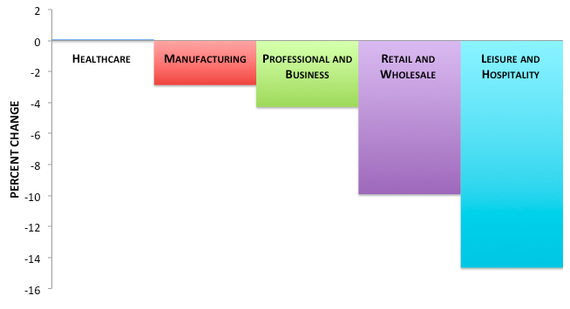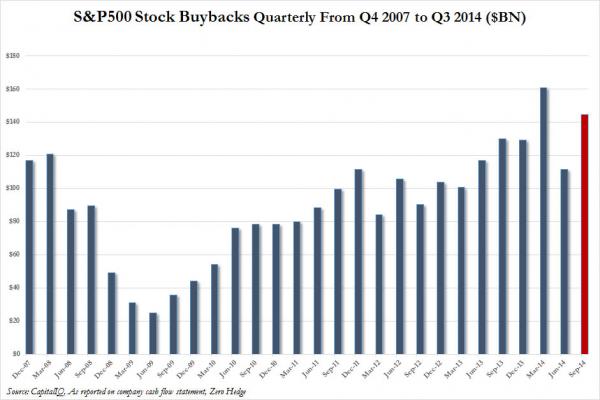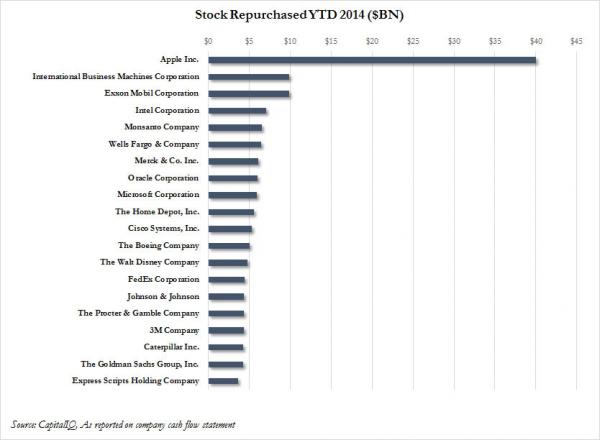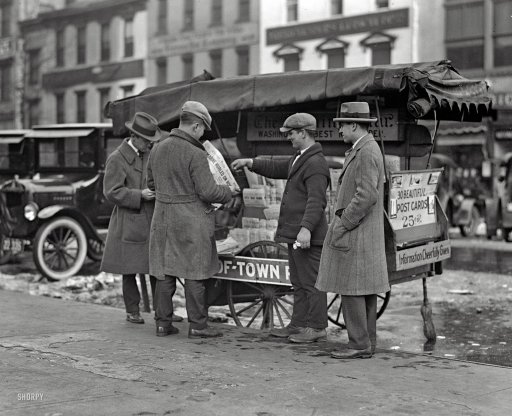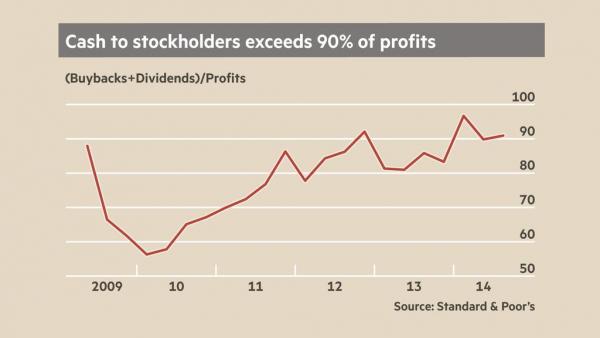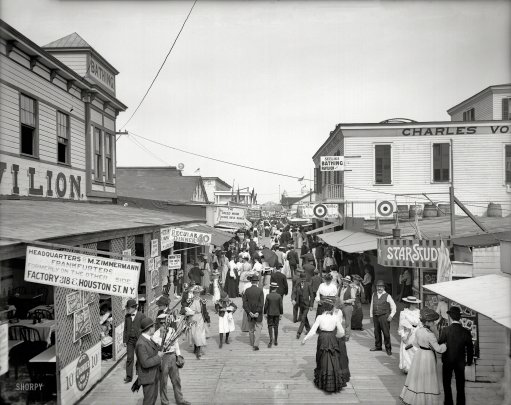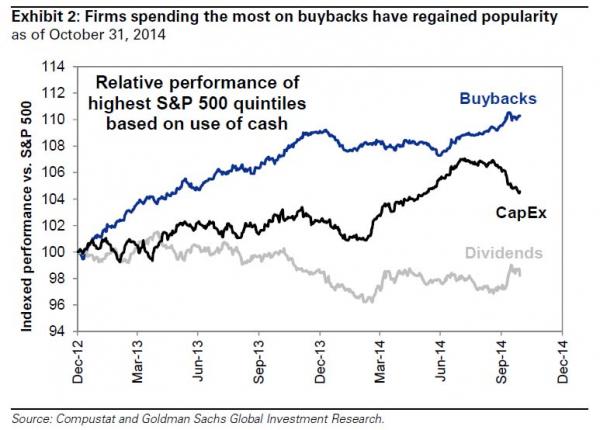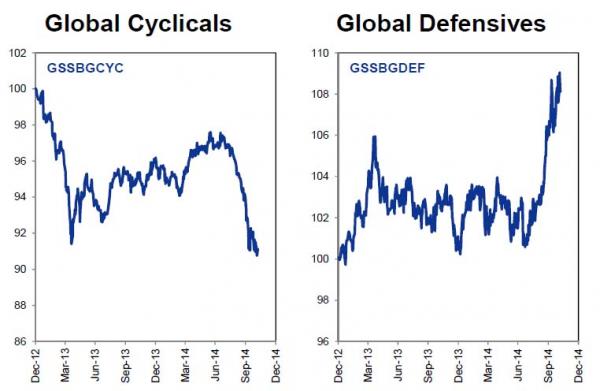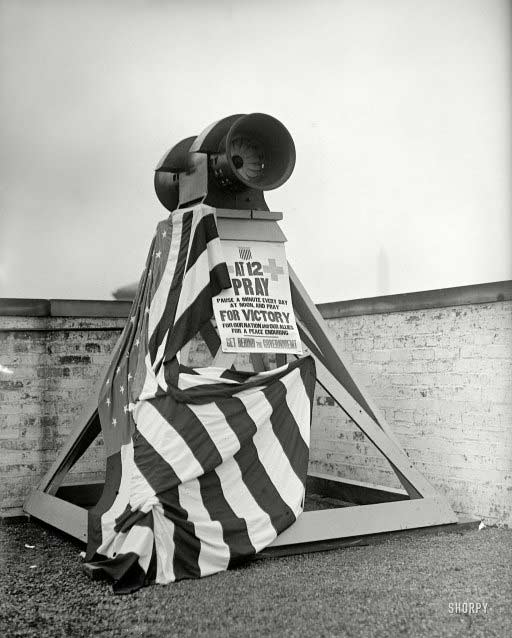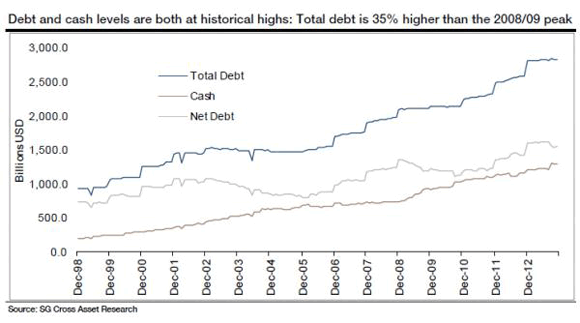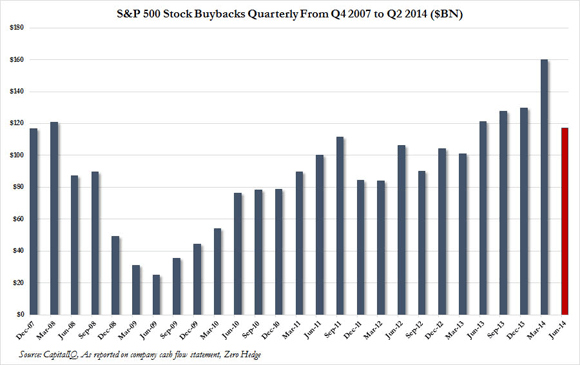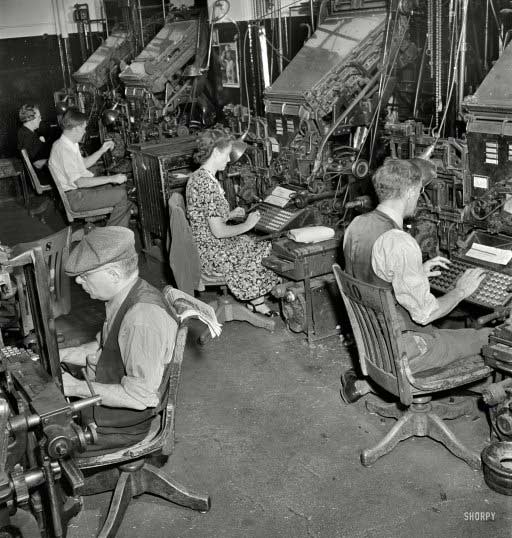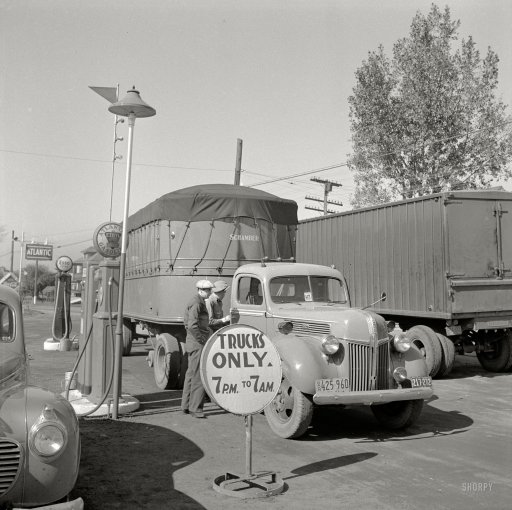
John Collier Trucks on highway en route to Utica, New York Oct 1941



Shanghai and the PPT.
• China Stocks Extend Biggest Selloff Since 2008 on Rescue Doubts (Bloomberg)
China’s stocks fell, capping the benchmark index’s biggest two-month tumble since 2008 amid growing concern that government intervention to prop up the market will fail. The Shanghai Composite Index dropped 0.8% to 3,205.99 at the close, paring a loss of as much as 3.8%. The SSE 50 Index, representing the biggest stocks in Shanghai, rallied as much as 6.7% from the intraday low. Citic Securities slid 5% after Xinhua News Agency reported that company executives were detained on suspicion of insider trading and the securities regulator was said to order the brokerage industry to boost its contribution to the nation’s market rescue.
Bearish bets in the options market climbed as traders weighed the level of state support before a World War II victory parade this week. Swings in Chinese markets this month have rattled investors worldwide as they struggle to anticipate policy actions in the world’s second-largest economy. Stocks rallied almost 10% over Thursday and Friday on speculation authorities are propping up markets before President Xi Jinping takes the stage at the parade, which the government will use to demonstrate its rising military and political might. “There is a lot of confusion about purchases of stocks by state-linked funds,” said Gerry Alfonso at Shenwan Hongyuan Group in Shanghai. “Disclosures are very limited so it is impossible to know what they are doing with certainty.”

And then searches for a backdoor? How about Belgium?
• Beijing Abandons Large-Scale Share Purchases (FT)
China’s government has decided to abandon attempts to boost the stock market through large-scale share purchases, and will instead intensify efforts to find and punish those suspected of “destabilising the market”, according to senior officials. For two months, a “national team” of state-owned investment funds and institutions has collectively spent about $200 billion trying to prop up a market that is still down 37% since its mid-June peak. China’s leaders feel they mishandled the stock market rescue efforts by allowing too much information to become public, according to senior regulatory officials speaking at a meeting late on Thursday — an account of which has been seen by the Financial Times.
Last week’s equities collapse, which prompted a rout in global markets, was partly blamed on authorities’ apparent decision to refrain from the share purchases they had been making since early July. After standing on the sidelines for more than a week, the government resumed large-scale stock-buying in the last hour of trade on Thursday. This helped to lift the Shanghai benchmark index from a small loss to end the day up more than 5%. The market rose by almost 5% again on Friday. Traders and officials said the latest intervention was aimed at providing a “positive market environment” in preparation for a big military parade this week to celebrate the 70th anniversary of the “victory of the Chinese people’s war of resistance against Japanese aggression”.
Senior financial regulatory officials insist that this was an anomaly, and that the government will refrain from further large-scale buying of equities. Instead, authorities are planning to sharpen their focus on investigating and punishing individuals and institutions they believe have taken advantage of the state bailout to make profits or have obstructed the government’s attempts to shore up the market. Late last week, the country’s securities regulator summoned senior officials from 19 brokerages, equity exchanges, futures exchanges and government-controlled industry associations, and ordered them to step up oversight of the markets. The regulator said 22 cases of insider trading, market manipulation and “spreading market rumours” had been handed over to the police.

It is no matter what.
• If the Options Market Is Right, China’s Stock Rescue Is Doomed (Bloomberg)
Options traders have never been so pessimistic on China’s stock market, betting the government’s renewed effort to prop up share prices is doomed to fail. The cost of bearish contracts on the China 50 exchange-traded fund has surged to the highest level versus bullish ones since they started trading in Shanghai six months ago. The so-called skew also climbed to a record for a similar ETF in the U.S., even as government buying drove China’s benchmark index to a 10% rally in the final two days of last week. While policy makers are trying to bolster the market before President Xi Jinping takes the stage in a World War II victory parade this week, bears argue that valuations are too high for the rally to last.
Chinese investors have about 5 trillion yuan ($783 billion) of borrowed money riding on stocks, and many of them are looking for a chance to exit, according to Bank of America. “More and more people are not convinced about A shares,” said Tony Chu at RS Investment Management. “Ultimately, the government needs to reduce intervention and let more de-leveraging happen.” The Shanghai Composite Index dropped 2.8% to 3,140.41 at 1:01 p.m. local time, while the China 50 ETF declined 3.4%. Puts that pay out on a 10% retreat in the fund cost 8.8 points more on Monday than calls betting on a 10% gain, according to implied volatility data on one-month contracts. As recently as Aug. 24, the bullish contracts were more expensive. For the U.S.-listed Deutsche X-trackers Harvest CSI 300 China A-Shares ETF, the skew reached a record 38 points on Aug. 27 and closed the week at 28 points.
Chinese policy actions last week suggest authorities are intent on putting a floor under share prices. On Tuesday, the central bank announced its fifth interest-rate cut since November and reduced the amount of cash banks must set aside for reserves. State buying on Thursday propelled the Shanghai Composite to a rally of more than 5% in the final hour of trading, according to people familiar with the matter, an advance that extended into a 4.8% gain on Friday. China’s intervention is part of a broader effort to ensure nothing detracts from the Sept. 3 parade, an event the government will use to demonstrate its rising military and political might. Authorities have also closed thousands of factories to curb pollution and ordered some vehicles off the road.

Pretty steep for a government that spreads fake economic numbers all the time.
• China Punishes 197 Over Stock Market And Tianjin ‘Rumours’ (BBC)
Chinese authorities have punished 197 people for spreading rumours online about the recent stock market crash and fatal explosions in Tianjin, according to state news agency Xinhua. A journalist and stock market officials are among those arrested, Xinhua said. It gave no other details. Chinese shares fell by nearly 8% after a week of volatile trading that spread fear to global markets. The Tianjin explosions killed 150 people – with 23 still missing. A total of 367 people remain in hospital after the 12 August blast at a warehouse where large amounts of toxic chemicals were stored. Twenty are in critical condition, according to Xinhua. Separately, the UK’s Financial Times says Chinese leaders feel they mishandled their stock market rescue efforts.
The paper, quoting an account of a meeting of senior regulatory officials on Thursday, said the government had decided to abandon attempts to boost the stock market and instead step up efforts to punish people suspected of “destabilising the market”. Chinese authorities tightly control information online and have previously prosecuted internet users for spreading rumours. The rumours described by the latest statement include reports that a man had jumped to his death in Beijing due to the stock market slump and that as many as 1,300 people were killed in Tianjin blasts, Xinhua said. The news agency said “seditious rumours about China’s upcoming commemorations of the 70th anniversary of the end of World War II” were also among the offences.
A journalist was also arrested along with several stock market officials, according to a Xinhua report. The journalist, Wang Xiaolu, is accused of “spreading fake information” about the market slump, the report said. The state news agency said Mr Wang confessed that he “wrote fake report on Chinese stock market based on hearsay and his own subjective guesses without conducting due verifications”. In 2013 Chinese authorities introduced a possible three-year sentence for spreading rumours – the sentence was supposed to apply to anyone who posted a rumour that was reposted 500 times or viewed 5,000 times.

Prosecute everyone, writers, investors…
• Families Of China’s ‘Disappeared’: Country Is Place Of ‘Fear And Panic’ (Guar.)
Beijing’s security forces are transforming China into a place of “fear and panic”, the families of 12 attorneys and activists who disappeared during a crackdown on human rights lawyers have claimed. In an open letter to Guo Shengkun, the minister of public security, the families said they had heard nothing from their relatives since they were detained during a roundup of government critics nearly two months ago. “Words fail to express our anxiety and helplessness,” they wrote, according to a translation by China Change, a human rights website. “When a terrorist attack is perpetrated, a terrorist group will come out and claim responsibility for it. When the police system of the People’s Republic of China disappears its citizens, shouldn’t it make a statement and say something?”
On 9 July Chinese security services launched what observers describe as an unprecedented offensive against the country’s outspoken “rights defence” movement, a network of lawyers known for taking on politically sensitive cases. Scores of lawyers and their associates were detained or interrogated in what activists believe is a coordinated attempt to stamp out opposition to the Communist party. Many were subsequently released after being warned not to speak out, but more than 20 activists, lawyers and legal staff remain in detention, with some being held in undisclosed locations. Those whose whereabouts remain unknown include Wang Yu, a 44-year-old human rights lawyer who disappeared from her home in the early hours of 9 July, and Li Heping and Wang Quanzhang, two Beijing-based attorneys who vanished the following day.
“Why is Daddy still not home?” Li Heping’s five-year-old daughter has asked relatives, according to the open letter, which was released to coincide with the International Day of the Victims of Enforced Disappearances. Maya Wang, the Hong Kong-based China researcher for Human Rights Watch, said that under Chinese law police had 37 days to formally arrest those they detained before having to release them. The ongoing detention of these activists and lawyers was therefore now unlawful under both international and Chinese law. In the open letter – whose signatories include the mother of Wang Yu and the wives of Li Heping and Wang Quanzhang – relatives voice concerns over the treatment their loved ones might be receiving. “Over the years, Chinese police are known to the world for extracting confessions through torture in the investigation stage,” they write. “We have little faith that the law will protect the safety of our loved ones when the authorities would not even acknowledge their whereabouts.”

North Korea?!
• Two Big Winners From China’s Big Slowdown (Pesek)
How panicked were investors last week about China’s stock market plunge? Enough to treat the Korean peninsula, a place that was teetering on the brink of war, as a safe haven. Even as policy makers braced for renewed military confrontation between North and South Korea, the won staged a rally. That’s made South Korean assets one of the few bright spots in a dark time for emerging markets. On Aug. 24 alone, investors yanked $2.7 trillion out of developing nations, with Indonesia, Malaysia and Thailand especially hard hit. It matched the violent September 2008 selloff after Lehman Brothers collapsed. Back then, Korea was battered so hard that pundits were calling it the “next Iceland” and the “Bear Stearns economy.” Now, together with the Philippines, it’s one of Asia’s only refuges from chaos.
It’s not hard to explain why many Asian economies are suffering from China’s slowdown. Exporters of commodities, who depended on a humming Chinese market, have especially suffered. But why are there such big outliers among battered emerging markets? The answer is that investors are finally basing their decisions less on herd mentality than nuanced, case-by-case analyses. “Emerging market investors have become a lot savvier,” says economist Frederic Neumann of HSBC in Hong Kong. “Gone are the days where emerging markets were all lumped into one bucket. Today, countries with stronger fundamentals are able to resist the spread of contagion washing over global financial markets.” Along with South Korea and the Philippines, Neumann notes that even some frontier economies, like Vietnam, “have weathered global financial turmoil with apparent ease.”
The common link among the success stories is they’ve gotten the basics right since Asia’s 1997 financial meltdown: They have healthier financial systems, greater transparency, stronger banks, sober national balance sheets, and reasonable current-account deficits. Malaysia’s reckoning, by contrast, is long overdue. The ringgit is trading near 17-year lows because scandal-plagued Prime Minister Najib Razak cares more about staying in power than modernizing the country’s unproductive economy. Meanwhile, Thailand’s military junta is undoing much of the progress Bangkok made since the late 1990s in strengthening the rule of law. And for all its gripes that Indonesia is being unfairly lumped in with Asia’s laggards, President Joko Widodo’s administration is rapidly losing the trust of investors. While there’s still time to win it back, Widodo’s first 315 days in office have been a case study in timidity, drift and lost opportunities.

More like Comedy Hour by the hour.
• Jackson Hole Questions Inflation Mastery Sought by Draghi & Co. (Bloomberg)
Mario Draghi may have skipped the Federal Reserve’s Jackson Hole symposium this year, but he can’t dodge its conclusion: central banks can’t steer inflation as well as they thought. Less than six months into a stimulus program that the European Central Bank president promised would revive consumer-price growth, the euro area is facing renewed disinflationary pressure as China’s economy slows and commodity prices slump. This week, Draghi may have to admit as much, and downgrade the institution’s inflation forecasts. The newest risk to prices highlights how in the 19-nation currency bloc – as in the U.S., the U.K. and other industrialized nations – headline inflation is still far below target and falling out of sync with the recovery.
Whether that heightens calls for the ECB to step up its €1.1 trillion QE program will depend on how Draghi communicates the complex economic picture. People think “central banks don’t have a handle on inflation any more and that’s not true,” Jon Faust, professor of economics at Johns Hopkins University, said in an interview at the Kansas City Fed’s annual meeting in Jackson Hole, Wyoming. “Inflation will come back, but the specific timing of that is much more difficult in the current environment.”

The last thing we would want is price discovery.
• Looting Made Easy: the $2 Trillion Buyback Binge (Whitney)
Corporations are taking the retirement savings of elderly public employees and using them to inflate their stock prices so wealthy CEOs and their shareholders can enrich themselves at the expense of their companies. And it’s all completely legal. Under current financial regulations, corporate bosses are free to repurchase their own company’s shares, push stock prices into the stratosphere, skim off a generous bonuses for themselves in the form of executive compensation, and leave their companies drowning in red ink. Even worse, a sizable portion of the money devoted to stock buybacks is coming from “massively underfunded public pension” funds that retired workers depend on for their survival.
According to Brian Reynolds at New Albion Partners: “Pension funds have to make 7.5%,” so they are putting their money “in these levered credit funds that mimic Long-Term Capital Management in the 1990s.” Those funds, in turn, “buy enormous amounts of corporate bonds from companies which put cash onto company balance sheets…and they use it to jack their stock price up, either through buybacks or mergers and acquisitions…It’s just a daisy chain of financial engineering and it’s probably going to intensify in coming years.” So, once again, ordinary working people are caught in the crosshairs of a corporate scam that could blow up in their faces and leave them without sufficient resources to muddle through their retirement years.
The amount of money that’s being funneled into buybacks is simply staggering. According to Dave Dayen at the Intercept: “Last year, companies spent $553 billion to repurchase outstanding shares, just short of the record $589.1 billion in 2007. Large companies like Apple, General Motors, McDonald’s, Pfizer, Microsoft and more have engaged in buybacks in recent years. Returning profits to shareholders through buybacks and dividends accounted for 95% of all earnings in 2014. As a result, each additional dollar of corporate earnings now translates to under 10 cents of reinvestment, according to a study by J.W. Mason of the Roosevelt Institute.”
This explains why business investment (Capex) is at record lows. It’s because the bulk of earnings is being recycled into buybacks, over $2.3 trillion dollars since 2009 to be precise. And it’s all connected to the Fed’s zero rate policy. Zero rates have created an environment in which corporations no longer look for ways to grow their businesses, expand operations, hire more employees or improve productivity. Instead, they look for the quick fix, that is, load up on debt, buy more shares, goose the stock price, and walk away with a bundle.

And makes a billion dollars in the process…
• ‘Very Tough’ For Fed To Normalize: Nassim Taleb (CNBC)
The Federal Reserve faces a “very tough” task in normalizing monetary policy, as it has limited tools at its disposal after years of near-zero interest rates, academic and writer Nassim Taleb said Friday. “The Fed is like a huge army with very sophisticated equipment and no ammunition,” he said in a CNBC “Power Lunch” interview. “They inherited that big machine without weapons. They realize that interest rates at zero is not something normal. And there’s no evidence that zero interest rates is better than 3%. But how to get to that normal level is going to be a very, very tough task for them,” the author of “The Black Swan” said.
Earlier this summer, expectations had increased that the Fed could raise interest rates in September, as its policy committee said it saw an improving U.S. economy and tightening labor market. But one of the most erratic stock market stretches in recent memory seemed to put a damper on the central bank’s plans. Concerns about China’s slowing economic growth have partially driven the rocky equity trading, which sent major U.S. averages down more than 5% earlier this week before a swift reversal. Taleb noted that he has “never seen so much excitement over nothing.” “China would not affect us directly economically. China would be maybe a diversion,” he contended, adding that slumping Chinese consumer demand would not disrupt most American companies.
Still, a hedge fund affiliated with Taleb posted a strong week amid the mayhem, according to a Wall Street Journal report. Universa Investments—which attempts to profit from extreme events—gained about 20% on Monday, sources told the newspaper. The Dow suffered a record intraday decline of nearly 1,100 points that day. The fund has accumulated more than $1 billion in profits, both realized and on paper, in the last week, the Journal wrote. Taleb declined to discuss the report in detail, but he noted that he is a scientific advisor to the fund.

More Yanis.
• Varoufakis on Schäuble (SWR-ADR)
Extract from Stephan Lamby’s SWR-ADR documentary Schäuble: Power & Powerlessness in which I discuss our government’s January-June 2015 negotiating experience and aspects of my discussions with Dr Wolfgang Schäuble.

Berlin refuses to extradite them to a fellow EU country?!
• German Business Execs Seek To Escape Prosecution In Greek Corruption Cases (AFP)
Siemens, Daimler, Rheinmetall – the cream of German industry – have been mired in cases of alleged corruption in Greece, the country that Berlin has repeatedly admonished for the parlous state of its economy. No date has been set yet for 19 former executives of German engineering group Siemens to appear in Greek court, but it is expected to be one of the biggest financial trials of the decade in Greece. More than 60 people in total are being investigated for corruption in the case that US watchdog CorpWatch has labelled “the greatest corporate scandal in Greece’s postwar history.” Siemens, whose links to Greece go back to the 19th century, is suspected of having greased the palms of various officials to clinch one of the country’s most lucrative contracts – the vast upgrade of the Greek telephone network in the late 1990s.
Overall, Siemens allegedly spent €70 million on bribes in Greece, according to Greek judicial sources. The investigation is now in its ninth year with a case brief over 2,300 pages long. Among those suspected of corruption is the group’s former point man in Greece, Michalis Christoforakos. But the 62-year-old, who holds dual Greek and German citizenship and at the height of his influence rubbed elbows with the ensemble of Greece’s political elite, is unlikely to face trial. Christoforakos fled Greece for Germany in 2009, and German justice has refused to extradite him, arguing that the statute of limitations covering his alleged activities has lapsed.
Relations between Athens and Berlin – already tested by the Greek economic crisis and Germany’s insistence on painful austerity to bail out the debt-wracked country – have not been helped by the Siemens case. Earlier this year, Greece’s combative parliament speaker Zoe Constantopoulou said the affair smacked of double standards on the part of Berlin. “This is a question of justice that shows there is doublespeak by Germany,” she told France’s Liberation newspaper in a recent interview.

How many will die in those two weeks?
• EU Ministers To Meet In Two Weeks To Find Solution To Refugee Crisis (Guardian)
EU interior and justice ministers are to meet in a fortnight in an effort to find concrete measures to cope with the escalating migration crisis. The ministers will meet on 14 September in Brussels after a statement from the home affairs ministers of Germany, France and Britain said they had “asked the Luxembourg presidency to organise a special meeting of justice and interior ministers within the next two weeks, so as to find concrete steps” to deal with the situation. The three “underlined the necessity to take immediate action to deal with the challenge from the migrant influx”.
The call came after Germany’s Thomas de Maizière, Britain’s Theresa May and France’s Bernard Cazeneuve spoke about the crisis on the sidelines of a meeting in Paris on Saturday on transport security after passengers thwarted an attack on a high-speed train from Amsterdam to Paris. In August, May visited Calais to inspect new security measures aimed at preventing migrants from reaching England via the Channel tunnel. Up to 5,000 displaced people are estimated to be in the French port, with at least nine known to have died trying to make the journey into Britain since June. Unprecedented numbers of migrants are reaching EU borders, surpassing 100,000 in July alone and reaching more than 340,000 this year so far. Italy and Greece are struggling to cope, while Macedonia has declared a state of emergency.
The Italian prime minister, Matteo Renzi, said on Sunday he believed the crisis would push the EU to adopt uniform rules for refugees in place of the current patchwork of laws and approaches. “It will take months, but we will have a single European policy on asylum, not as many policies as there are countries,” he told the Corriere della Sera. The French, British and German statement specifically called for reception centres to be set up urgently in Italy and Greece to register new arrivals, and for a common EU list of “safe countries of origin” to be established, which would theoretically allow asylum applications to be fast-tracked for specific nationalities.

“Everything must move quickly,” says Merkel. And then calls a meeting only on September 14. That’s how full of it she is.
• Unprecedented Migrant Crisis Forces EU To Seek Answers (Reuters)
European Union ministers were summoned on Sunday to meet in two weeks’ time to seek urgent solutions to a migration crisis unprecedented in the bloc’s history, as the mounting death toll on land and sea forced governments to respond. Luxembourg, which holds the rotating EU presidency, called interior ministers from all 28 member states to an extraordinary meeting on Sept. 14, saying: “The situation of migration phenomena outside and inside the European Union has recently taken unprecedented proportions.” Chancellor Angela Merkel earlier called on her EU neighbours to do more as Germany expects the number of asylum seekers it receives to quadruple to about 800,000 in 2015.
“If Europe has solidarity and we have also shown solidarity towards others, then we need to show solidarity now,” she told reporters in Berlin. “Everything must move quickly.” Luxembourg said the meeting would focus on policies on sending some migrants home and measures to prevent human trafficking. Seven people died when their boat sank off Libya’s coast on Sunday, the second such fatal accident at sea within days. The Italian coastguard said some 1,600 migrants had been rescued in the Mediterranean and brought to Italy over the weekend. At least 2,500 migrants have died since January, most of them drowning in the Mediterranean after arduous journeys fleeing war, oppression or poverty in Syria and other parts of the Middle East and Africa or beyond.

Greeks should look at their own priorities too.
• Financialy Strapped Greece Struggles With Flood Of Refugees (WSJ)
In the hot summer sun, Giorgos Tirikos-Ergas rushed by bicycle last week to a small former store where volunteers provide food and temporary shelter to some of the thousands of refugees who have landed on this island in recent months. He was responding to a call he had gotten while working at his father-in-law’s butcher shop, asking for his help in assisting a young Syrian girl who was feeling ill. The nonprofit organization that Mr. Tirikos-Ergas co-founded, called Angalia—or “hug” in Greek—is one of many volunteer initiatives helping the country cope with a massive wave of migrants, most of them refugees escaping conflict and violence in Syria and Afghanistan.
The run-up to elections set for next month has further paralyzed Greece’s response to the migration crisis as authorities are already struggling to cope with the skyrocketing number of arrivals amid the country’s debt woes and near-empty public coffers. Volunteers such as Mr. Tirikos-Ergas are often all that prevents complete chaos on the islands bearing the brunt of the migration, fueled this summer by the worsening war in Syria. The helpers warn that they have their limits. “We are not made of concrete,” the 33-year-old said. “We are under enormous pressure, especially from the people that we can’t help. At the same time, we are juggling all of our other responsibilities.”
The migrants are crossing into Greece from Turkey before heading to Northern Europe by way of the so-called Balkan corridor through Macedonia and Serbia and on into Hungary. Nearly 142,000 migrants have arrived by sea in Greece since June 1, according to the International Organization for Migration. While Kos, Chios and other Greek islands in the Aegean Sea have also received migrants, Lesbos has absorbed the bulk: More than 93,000 have arrived on the island so far in 2015, more than seven times the number in 2014.

One of many.
They’ve made it 1,600 miles by boat, train, car and on foot. Now the light is fading as they finally reach the edge of Greece. “Let’s move,” Ahmed Jinaid beckons, his family trailing him up a hill in high grass. But then he stops. He is standing beside an abandoned watchtower near the northern border, the one after which there’s supposed to be no talking and, worse for a man with a weakness for Winstons, no smoking. The 42-year-old former deliveryman squints at his white Samsung Galaxy phone. He is looking for directions. “No, no, no,” he mutters, blinking at the glowing screen. “What happened to the GPS?” Ahmed is eight weeks out of Syria, part of a historic exodus of Arabs, Africans and Asians fleeing war and oppression. More than 102,000 migrants have risked the Mediterranean Sea to reach Europe this year.
Many land in Italy, but a surging number of migrants are coming ashore in Greece. From there, they venture north through the Balkans to the rest of the European Union — a web of perilous trails stretching hundreds of miles. Aid workers have nicknamed it the Black Route. Ahmed had meticulously plotted the trek on his phone’s GPS. On a steep hill ahead, the gaudy glow of red neon burns. That’s Macedonia and the casino town they need to avoid. Gangs armed with guns and lead pipes roam the woods, beating and robbing migrants. There are corrupt police on the route. Heat-seeking cameras. Mountains. Wolves. Ahmed is limping from days of walking. A mysterious pain is knifing through his back. The untreated goiter on his neck — the one he tries to hide with his jacket collar — is throbbing.
He taps the Samsung screen again. It’s frozen. His smartphone. It cost $275 on the black market back in Aleppo, just shy of three months’ salary. His compass. Lodestar. A lifeline for the modern migrant, who journeys to the First World by the grace of the mobile Internet. “Uncle,” whispers Marwa Jinaid, Ahmed’s shy 19-year-old niece. A kindergarten teacher with flawless copper skin who is used to afternoons coloring with kids, she lets go of the hand of her 11-year-old brother, Mohamed. He’s the family comedian, the kid who endured the past few years of war in Syria by watching “Tom & Jerry” cartoons in Arabic. But he has suddenly run out of jokes. And Marwa is hugging herself in a beige winter coat despite the warm spring night. Bandits, she knows, are capable of more than thievery.
“Uncle,” Marwa says again, on the verge of tears. “What are we going to do?” Ahmed is taking his niece and nephew to their father, Ismail, who fled Syria last year and is now living in a pastel village called Gmünd in Austria. Theirs is a journey prompted by the desperation of war. It also reflects the dysfunction of the European Union. That’s because many of the Syrians and Iraqis landing in Greece stand a good chance of qualifying for legal asylum. But there is little work and few prospects for aid in this bankrupt country. Farther north, in promised lands such as Austria, France, Germany and Sweden, asylum means shelter, a generous stipend and the prospect of a good job. The European Union, however, offers no safe passage there. Hence the Black Route.

The most tragic species. Not rhinos.
• South Africa Sees Poaching Intensify as 749 Rhinos Killed (Bloomberg)
Rhino poaching in South Africa has intensified this year after a record number of animals were killed in 2014, according to Environmental Affairs Minister Edna Molewa. In the period to Aug. 27, 749 rhinos were poached compared with 716 in the same time frame last year, Molewa told reporters on Sunday in the capital, Pretoria. Of that total, 544 were killed in the 2 million-hectare Kruger National Park, which borders Mozambique and Zimbabwe. “The problem of people attempting to poach our rhinos is intensifying,” Molewa said. “The number of arrests inside Kruger National Park was 138 for this year compared with 81 arrests for the same period last year.”
The government has yet to decide whether to sell off its rhino-horn stockpile in a bid to slow the slaughter after 1,215 rhinos were killed illegally in South Africa last year, Molewa said. While a committee of inquiry investigates the feasibility of legalizing rhino-horn trade, the country has relocated at least 100 beasts to neighboring Botswana and Zambia. Demand for rhino horns has climbed in Asian nations, including China and Vietnam, because of a belief they can cure various ailments including cancer. South Africa is working on conservation awareness programs with Cambodia, Vietnam, China and Mozambique, Molewa said. South Africa is home to most of the world’s remaining white rhinos, with a population of about 18,500 animals, according to Sam Ferreira, a large mammal ecologist at South African National Parks. The country’s 1,916 black rhinos is the highest number in the world, followed by Namibia, Molewa said.


